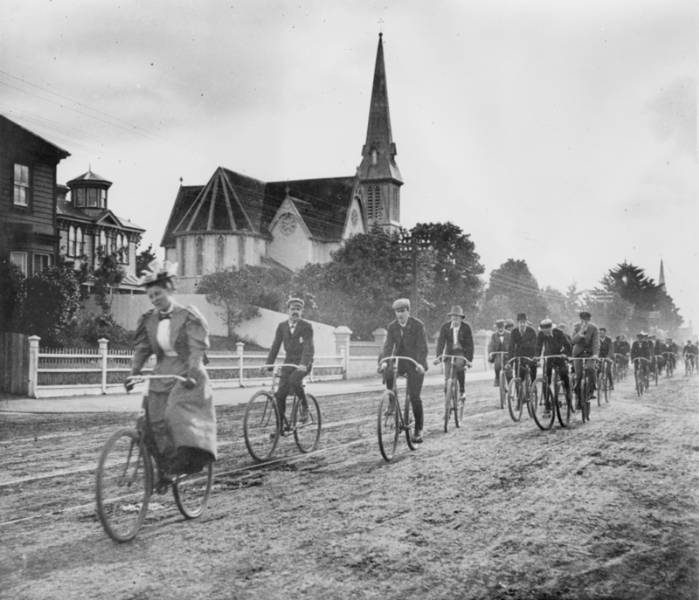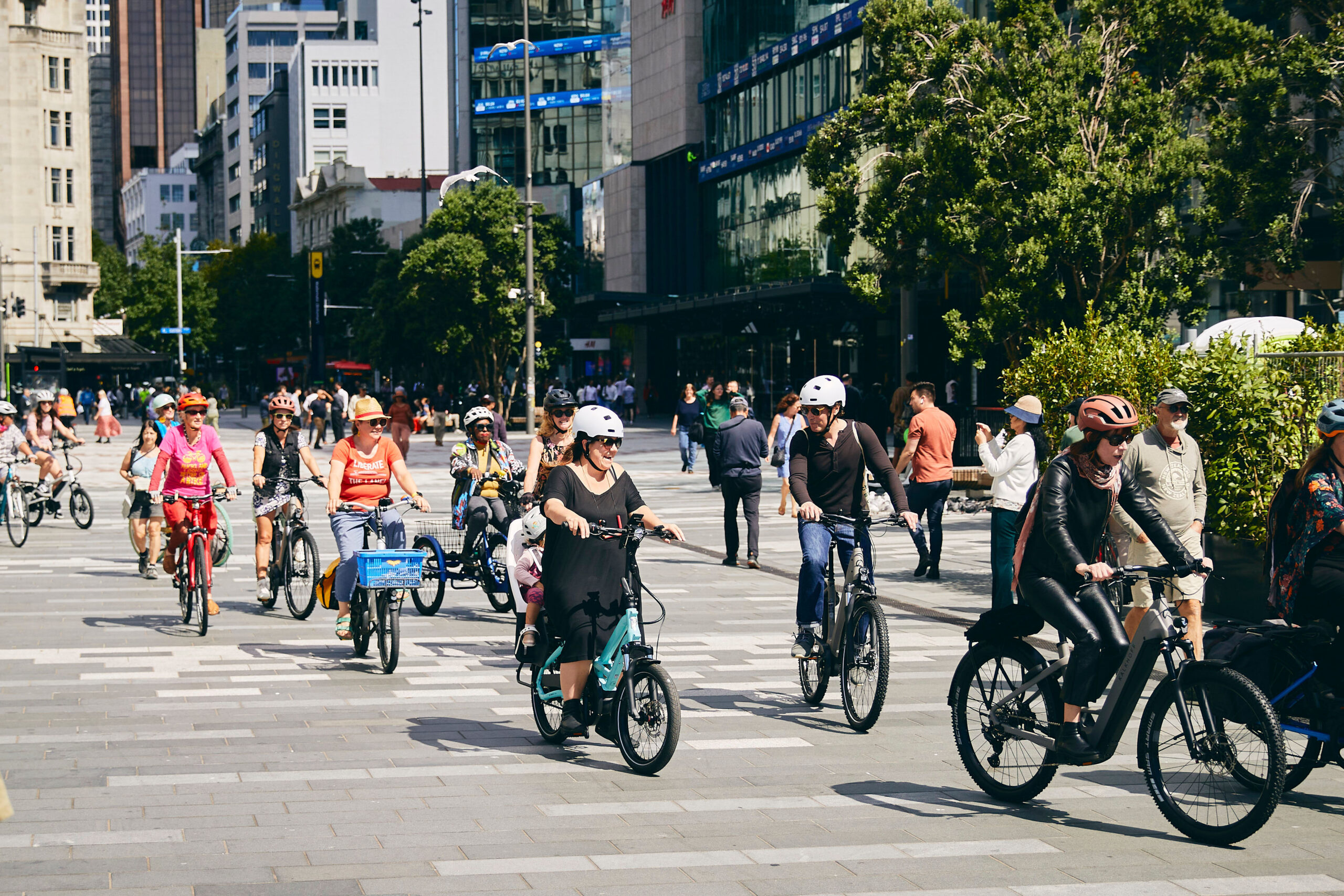Once upon a time – a century and a half ago, in fact – Auckland’s first bicycle ride took place, setting in motion a social and transport revolution that continues to this day.
To celebrate this anniversary, we’ve made a timeline of some key highlights of Auckland’s first 150 years on bikes. Of course we know there are many more stories of our shared bike history to tell, and a lot more to come, so we’re all ears for your ideas. For today, please enjoy this panorama of some of the big moments along our journey so far, and some glimpses of what’s on the road ahead.
The story of how Aucklanders got rolling
Back to that very first ride. Now, either there wasn’t a lot else going on that evening, or the daring young men on that bone-shaker bike were very savvy marketers, because their late night feat was briskly written up in the paper the following day.
As reported by the Daily Southern Cross on August 24, 1869:
Our readers have already heard a great deal about velocipedes coming into use in other colonies and provinces, and no doubt will be glad to learn that at last Auckland can put in a claim to the possession of a bicycle. Messrs. Cousins and Atkin have been lately engaged in the manufacture of one of these, and which was sufficiently completed last evening to allow of a trial.
It was taken up to the top of Grey-street about nine o’clock, and Mr. Cousins mounted the “saddle,” and made his first public essay upon the two-wheeled vehicle. Since Grey-street has been metalled and improved, there are few better roads in the province; and its gentle slope towards Queen-street must prove of great advantage to the tiro in making his first attempt at mastering tbe new iron horse.
The night was bright moonlight, and Mr. Cousins managed to get the machine in motion, and keep it going for two or three hundred yards, when, finding he was likely to come to grief by losing his balance, he judiciously placed his feet astride as far as possible, and so prevented a spill.
Several other attempts were equally successful, aud we may congratulate Mr. Cousins on the chance of his speedily becoming an adept at this kind of work. Two of his employes likewise tried their prowess and succeeded pretty well for beginners.
After the “velox” (the latest name given to it, as a contraction of the word velocipede, which is found to be too long) had been fairly tested, it was taken back to the workshop, where it will receive its finishing touches in the course of a few days.
We understand that it has been made to order, and no doubt others will soon follow. The cost of manufacture is, we believe, about £14; and the weight of the “velox” 40lb. The front wheel— the “guider” — is 3 feet 4 inches, and the hind wheel 2 feet 8 inches, in diameter. Both wheels are of wood — lancewood, we believe— with iron tires, and the spokes are very light, but very durable. The rest of the vehicle is of iron.
We hear that Messrs. Cousins and Atkin have offered a very handsome premium to any of their employees who can first bring it safely along Queen-street without a “spill.”‘
So much about this glimpse of the beginning of Auckland’s bike revolution still rings true. The DIY. The get-up-and-go. The camaraderie. The openness to adventure. The thrill of riding by moonlight with your mates. And the excitement of being a part of history, and putting your city on the map.
Alas, there are no known images of the evening’s activities. But we do know what the bicycle itself – and perhaps the rider too – would have looked like. This photograph taken in South Australia the following year captures the style of the times.

We also know what the location looked like. The carriage-makers Cousins and Atkin were smart in choosing Grey St (now Greys Ave) for their first run. Not only was it handy to their premises, with a gentle slope; it was also one of the smoothest streets in Auckland at the time.

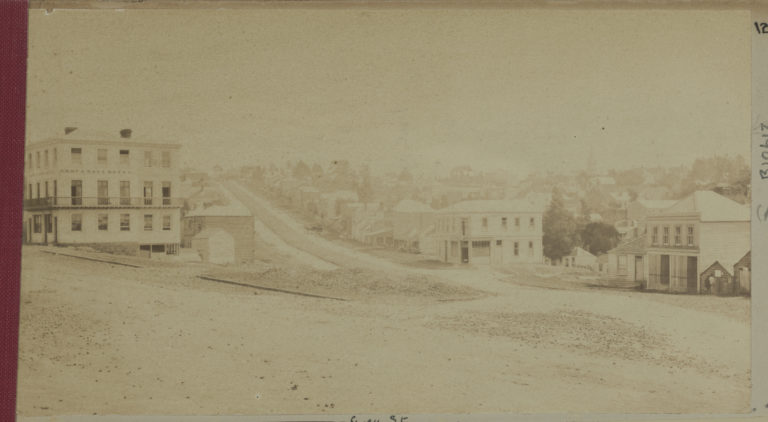
That’s a crucial detail. “Good roads” was the cri de coeur for the early cyclists of Auckland, who campaigned vigorously for metalled (and later, tarmacked) surfaces to smooth the way.

They petitioned parliament for taxes to enable sealed roads and vital links – and in some cases, they simply rolled up their sleeves and got on and built them. Like the Birkdale Cycle League, which gathered donations (including a barrel of tar and a quantity of sawdust) and in 1903 hand-built the “first cycle track in the colony”, a three-mile path from Highbury Corner to Birkdale. It was enthusiastically supported by the Mayor of Northcote, who on opening day hosted 300 cyclists for a grand picnic followed by a group ride along the track.

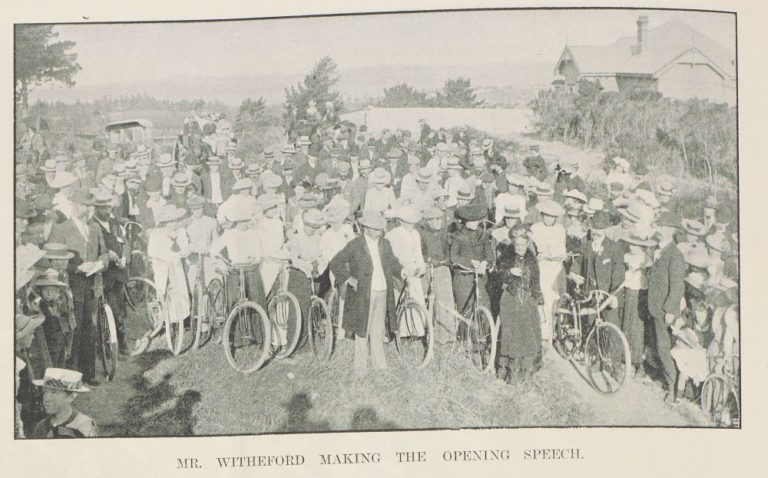
And although that very first moonlit bicycle ride seems to have been a blokes-only affair, you can see from the photos above that New Zealand women were swift to pick up on the joy of bikes, which soon became a crucial tool in the campaign for women’s suffrage, as well as just a rad way to get around.
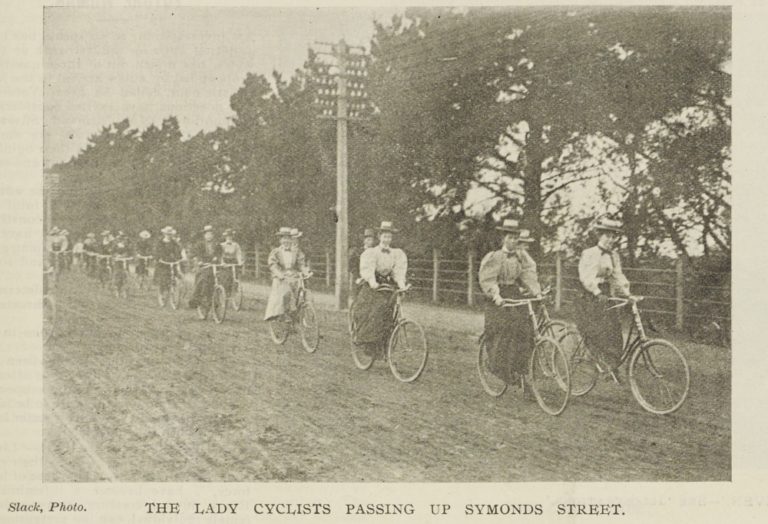
And we’re still at it today, as you’ll see from the timeline. Our chair, Barb Cuthbert, who’s been at the helm for 10 years this year, is a great-great-niece of the legendary Kate Sheppard and brings that same let’s-do-this energy and dedication to the cause!
The road ahead
Looking at the long timeline, you can see that the call for “good roads” echoes with relentless urgency down a century and a half of community action and advocacy to where we are now.
Every month in our Project Watch round-up, we track progress towards the vital network and ask: “Are we there yet?” Just this week, Emma’s moving first-person story of the challenges we face every day, which has been read and shared by thousands of people in Auckland and well beyond, reminded us how far we have to go.
The good news is that recent investment is paying off handsomely, with data showing the growth in ridership – as always – is strongest on weekdays and along protected and connected routes, even in midwinter, with cycling neck-and-neck with public transport as the city’s fastest-growing travel mode. There’s an exponential e-bike revolution happening under our noses, and communities are working to prioritise children’s bike safety.
No wonder Auckland Transport’s own research shows a majority of Aucklanders like bikes, feel good about cycleways in their neighbourhoods, and would love to ride more if it were safer. Auckland’s cycling renaissance has achieved an unstoppable public momentum.
As always, Aucklanders on bikes are showing the way. Now all eyes are on the city and the transport agencies to rise to that challenge.
So, as we head towards our AGM next week, we’re taking stock of how Auckland can provide safe cycling infrastructure “at scale and at pace”, as called for in the city’s Climate Action Plan (open for consultation until 6 September; our feedback guide coming soon!). We’re assessing the local government candidates who are asking to represent you in the next three years (voting begins 20 September; our voter guide coming soon!). And thanks to you, we’ve delivered a list of opportunities for pop-up protection to the team at Auckland Transport with hopes of seeing swift tactical action.
With your support, we’ll keep working for a vital network, local links, and safer speeds – for another century and a half if that’s what it takes! Happy 150th bike birthday, Auckland. Long may we roll.
Update: On Friday night, exactly 150 years after the first ride, we re-enacted the historic occasion for the cameras with Shane Price and his original 1869 velocipede, for a live cross to The Project (thanks to Tony Lyall who bravely broadcast while pedalling, and camera operator Liam who rode along in the front of a cargo bike). Afterwards we rode with Shane down Queen St, without a spill – thus rising to the challenge issued by Messrs Cousins and Aitken. Now, where do we collect our winnings?

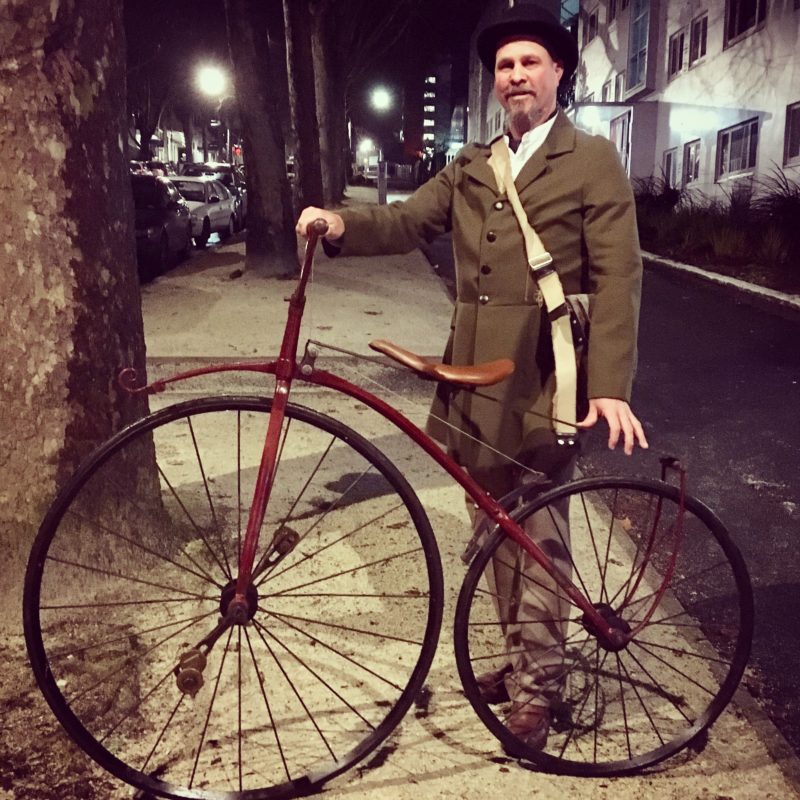

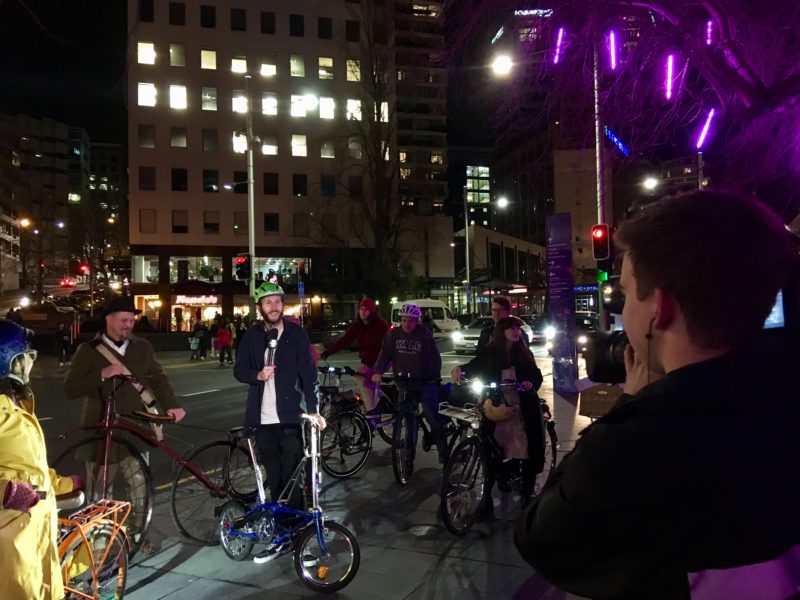
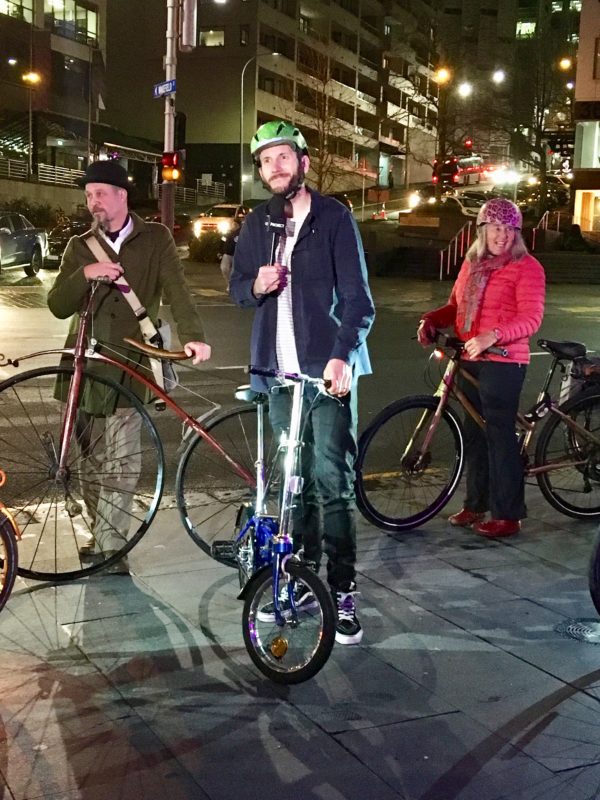

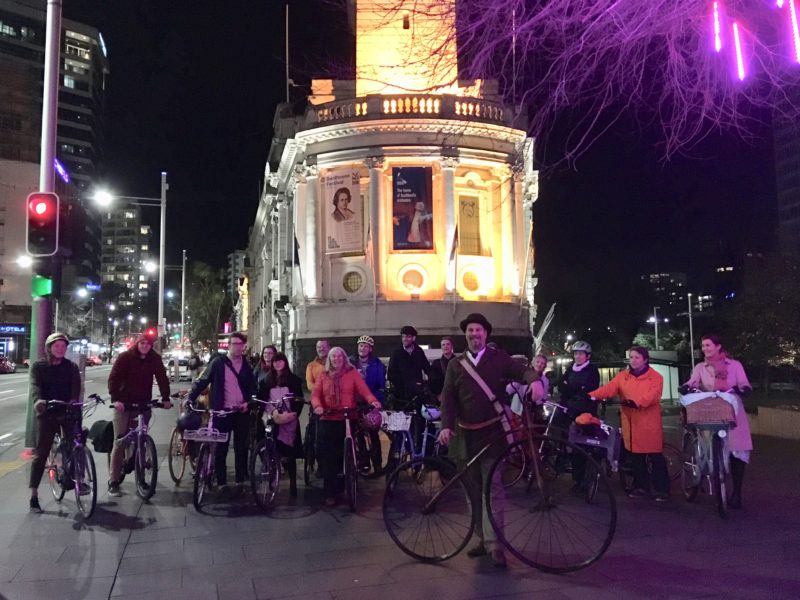
Header image: The Holy Sepulchre Bicycle Club booting it up Khyber Pass in 1896 – some 27 years after Auckland’s first bicycle ride took place, by which point cycling had become the vital part of the urban landscape it remains to this day. How time flies! (Image: Auckland War Memorial Museum)

